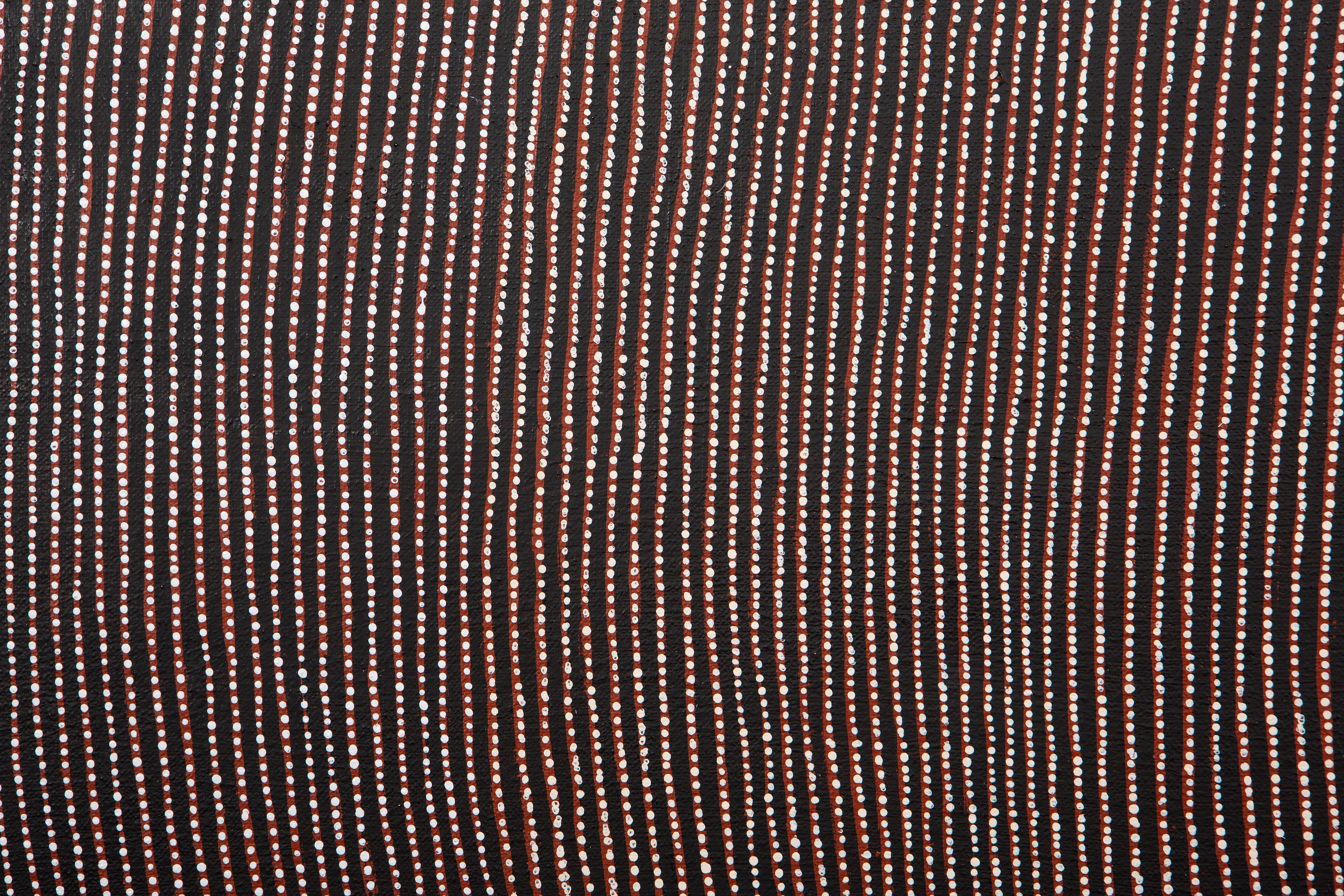
Mantua Nangala
Born c. 1959, Tjulyurru, Western Australia; Lives and works Kiwirrkura, Western Australia
"The story that I paint is Marrapinti. It is a sacred women’s place that is my ngurra [Country] — it is a very important place for my people."
Artwork
Exhibitions
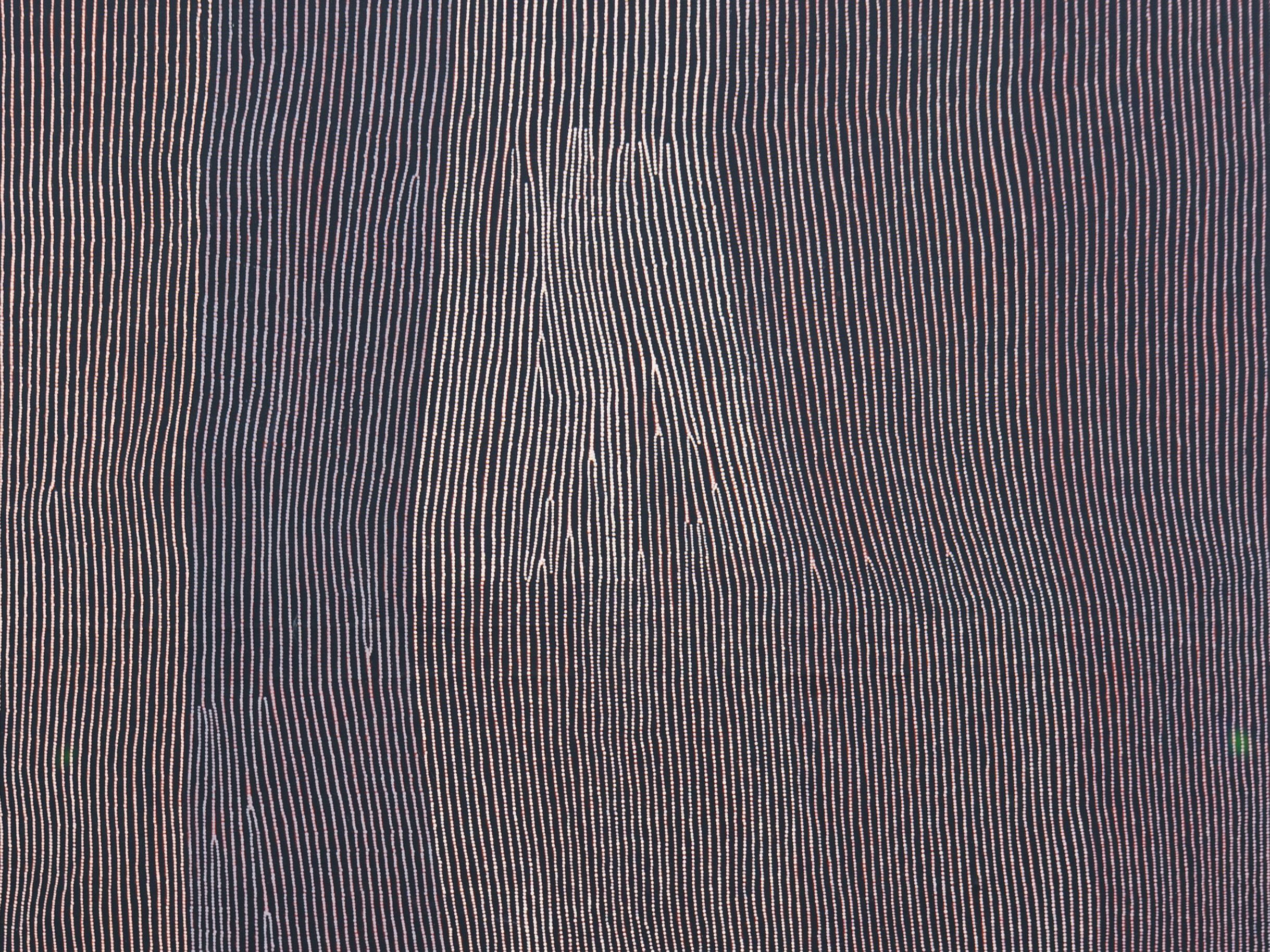
Mantua Nangala & Yukultji Napangati
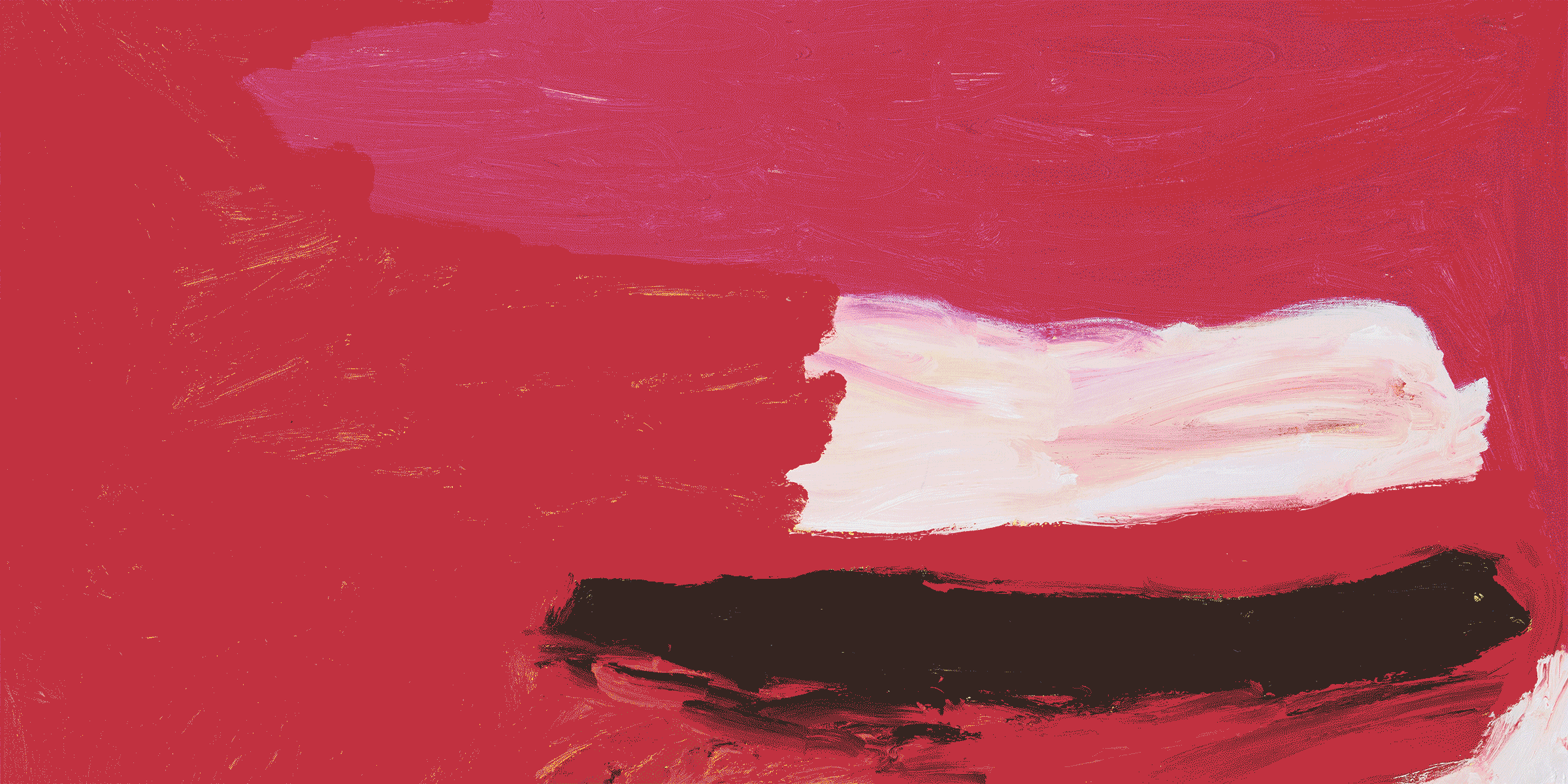
Desert + Coast: Seven Elder Aboriginal Painters
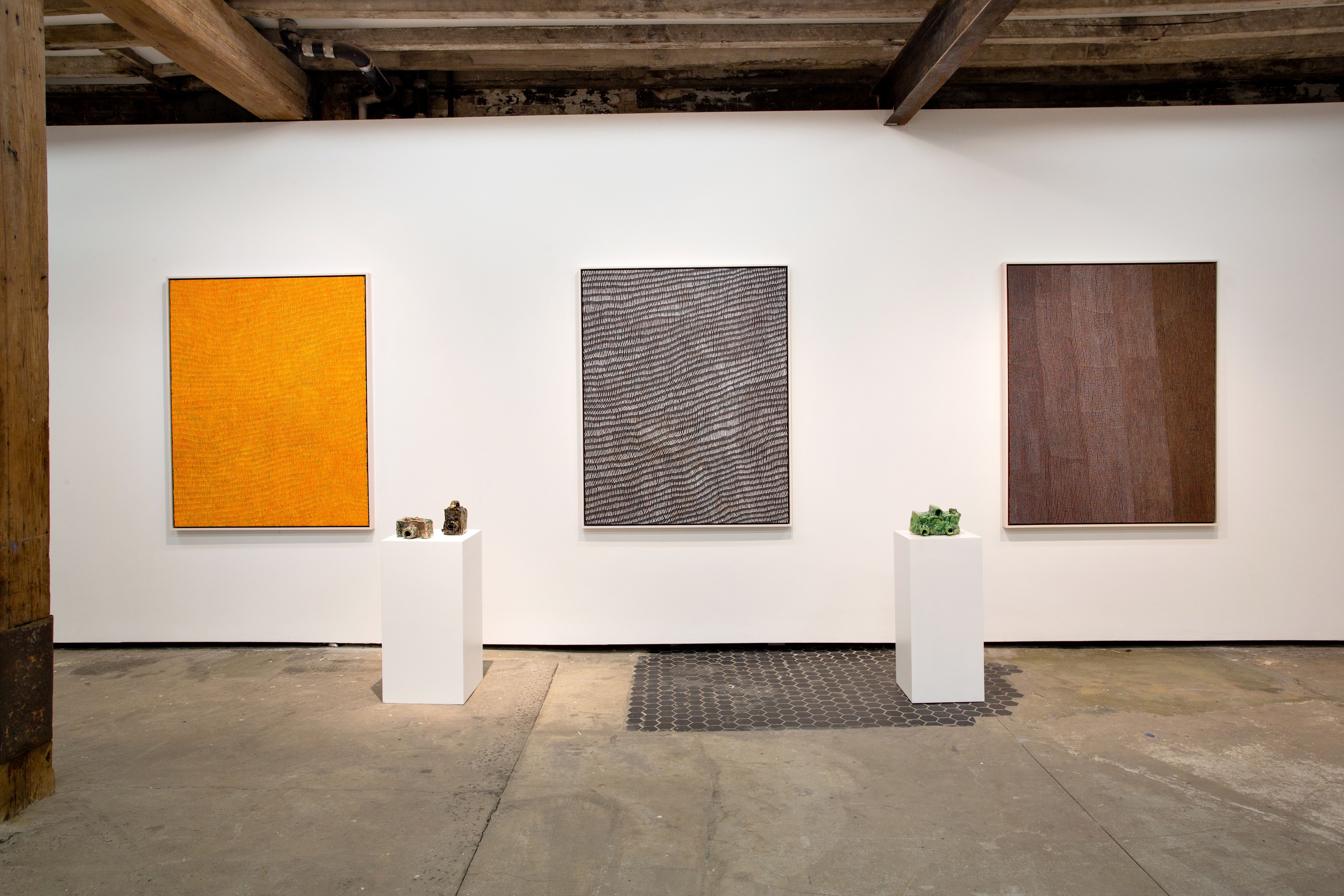
Outsider Art Fair 2021
Biography
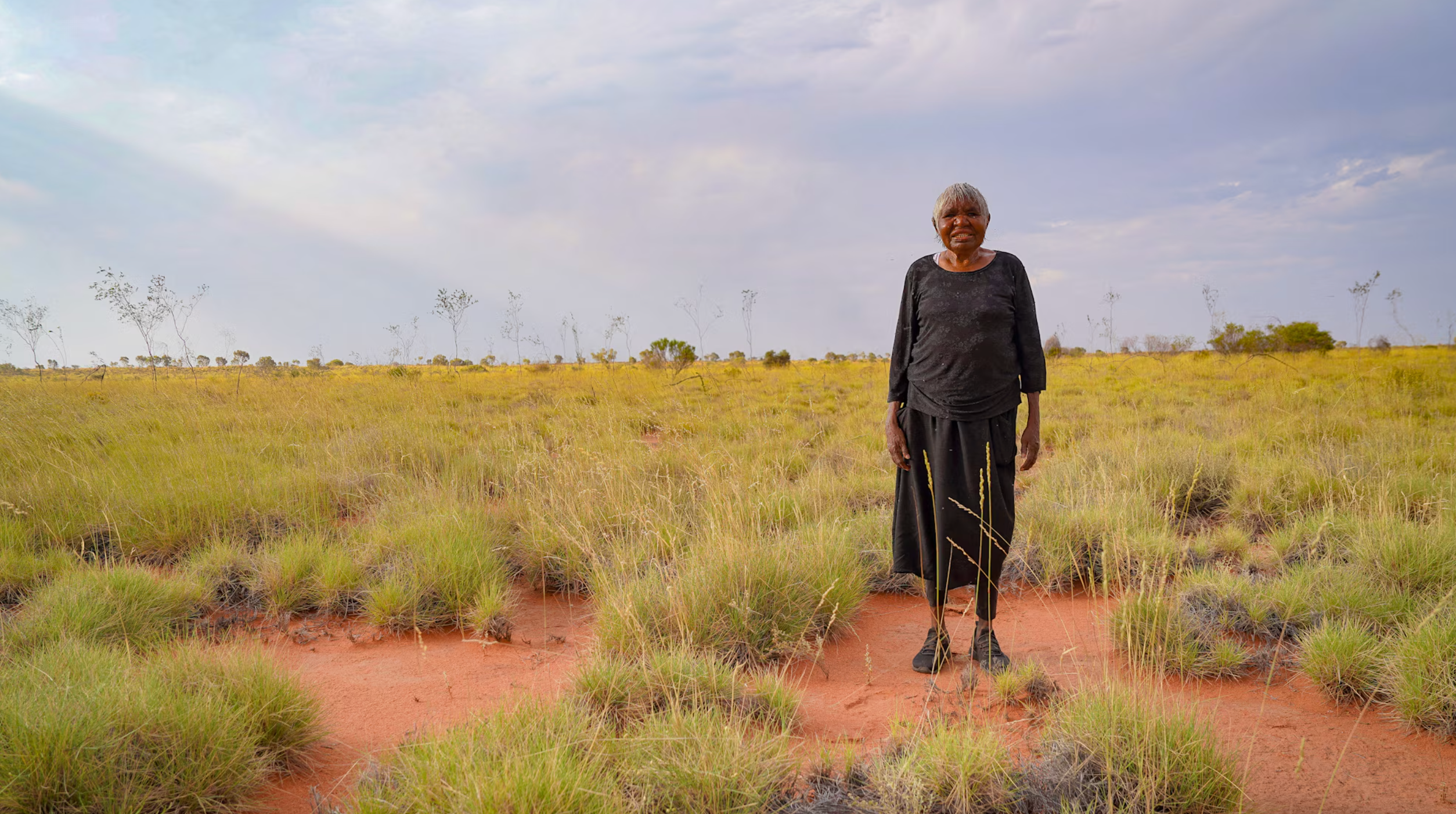
Mantua Nangala is a senior Pintupi Lore Woman and Papunya Tula artist. Her family was displaced from their Country during her childhood, and they moved between settlements across Western Australia for many years. In 1964, they were forcibly settled on the government reserve of Papunya, along with many other Pintupi, Anmatyerre, Warlpiri, and Arrernte peoples. In 1981, following the establishment of the Kintore and Kiwirrkura communities, Nangala relocated to Kintore, later settling in Kiwirrkura in Western Australia, the nearest community to her Pintupi homelands.
Nangala is the daughter of Anatjari Tjampitjinpa, and sister of Ray James Tjangala, Yinarupa Nangala, and George Yapa Tjangala, all illustrious Papunya Tula artists. Her Country lies west of Kiwirrkura and extends deep into the Gibson Desert, where rippling tali (sand dunes) dominate the landscape. Nangala began painting for Papunya Tula Artists in 1998, quickly developing a distinctive style to express her intimate connection to Country and impart the respective histories and narratives of place. Her painting practice relates to her Tjukurrpa (ancestral knowledge), particularly the epic travels of the Kanaputa women as they traversed the artist’s Country, their adventures shaping and creating many significant sites, including Mukula, Marrapinti, and Yunala.
Throughout her work, Nangala employs a fine dotting technique applied through a slow and meticulous process of mark-making. Rhythmic patterns sprawl across her canvases, manifesting themselves in a range of muted tonal gradients pierced by soft creamy whites. The resulting dotted undulations evoke the ever-moving tali of the Gibson Desert. This artful combination of the momentous and the minute conveys the significance of her Country, and her intimate knowledge of every detail.
Nangala’s mark-making creates the illusion of movement, reflecting both the immensity and the intricacies of the desert landscape—in particular, the interaction of light, wind, and sand. The artist says, “When you look at the canvas you can see movement; I like the way it changes over the canvas.”
Her work has featured in major exhibitions throughout Australia, including Pintupi Way, Drill Hall Gallery, Australian National University, Canberra (2023), the 4th National Indigenous Art Triennial: Ceremony (2022–24), National Gallery of Australia, Kamberri/Canberra, and Tjukurrtjanu Irritija Tjunta – Belonging to the Dreaming for a Long Time (2022), Mparntwe/Alice Springs (Australia). Nangala’s work has also featured in international exhibitions, notably Irritija Kwarri Tjungu: Past & Present Together (2022), Kluge-Ruhe Aboriginal Art Collection of the University of Virginia (USA); and Pro Community Papunya Tula Artists (2009), Kunstwerk, Eberdingen-Nussdorf; ArtBar 71, Berlin; VDMA, Frankfurt; and Artkelch, Freiburg (all Germany).
In 2018 and 2019, her work was shortlisted for the National Aboriginal and Torres Strait Islander Art Awards, Museum and Art Gallery of the Northern Territory, Garamilla/Darwin (Australia); and the prestigious Wynne Prize, Art Gallery of New South Wales, Gadigal/Sydney (Australia). Her work is represented in private and public collections in Australia and internationally, including the National Gallery of Australia, Kamberri/Canberra (Australia), the Queensland Art Gallery of Modern Art, South Brisbane, (Australia) and the Kluge Ruhe Aboriginal Art Collection of the University of Virginia (USA).